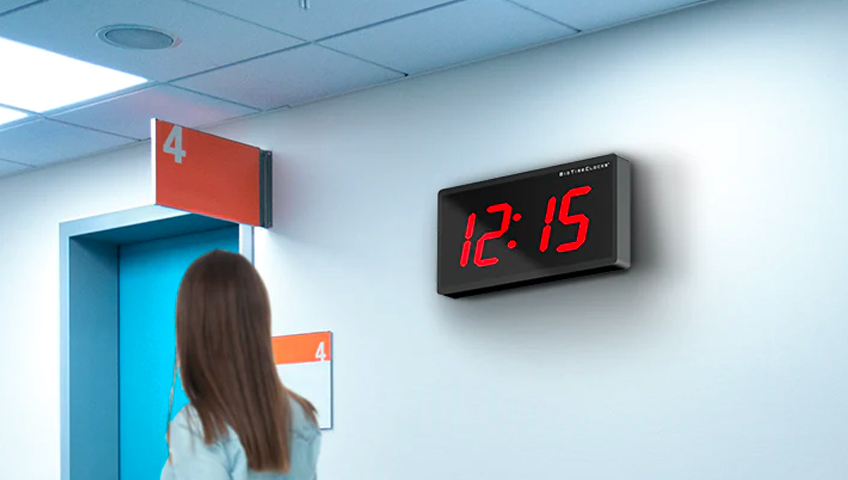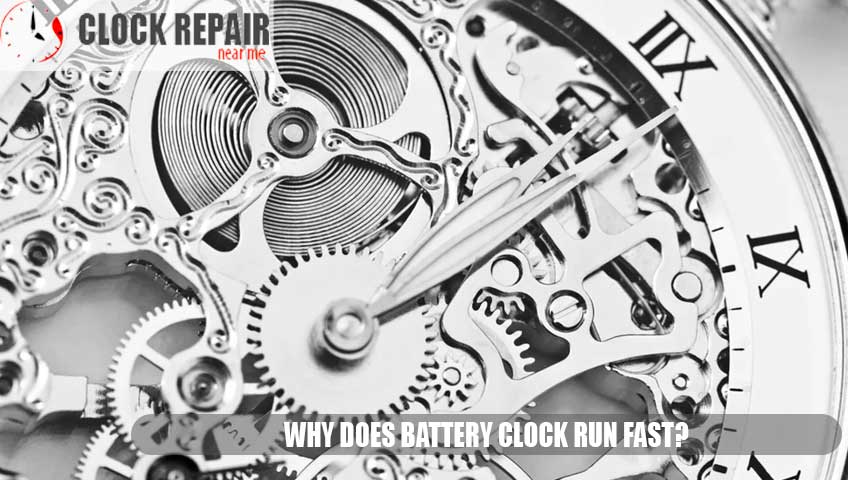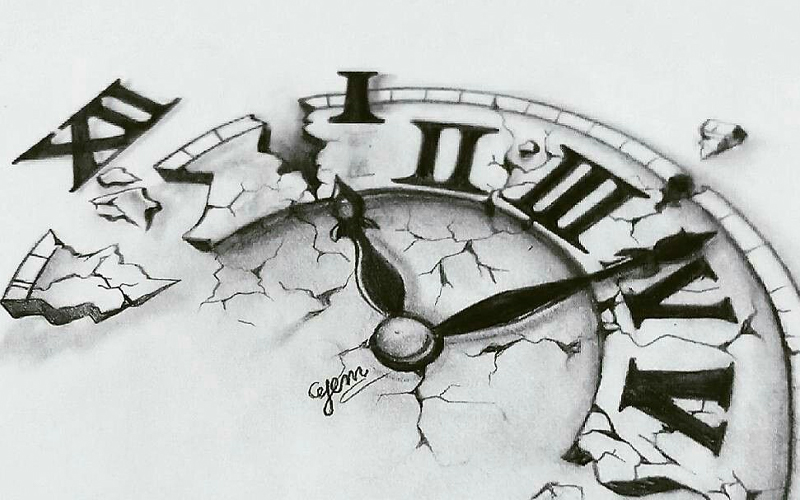Can old clocks be fixed? 5 steps These of you who comply with my Instructables have in all probability observed that I like to take one thing outdated and ineffective and reserve it from the scrap heap by giving it life as soon as once more. I really like going to flea markets typically and the problem of fixing one thing that others suppose is irreparable.
I all the time search for an outdated clock throughout my travels, particularly outdated alarm clocks and veiled clocks.
Why watches? First, I’m intrigued by the mechanical nature of outdated watches – I imply, they’ve gears, sprockets, springs and levers – all types of neat issues that, whereas working as designed, really catch the passage of time! Second, apart from uncommon and costly watches, when an outdated watch stops working, most individuals assume it is gone.
What I’ve discovered over time is that an outdated watch can often be repaired – often very simply. And if it might’t be repaired AND has an attention-grabbing type, it might all the time be became a quartz motion however I solely do it as a final resort.
This Tutorial doesn’t make you an professional in watch restore nor does it cowl the small print of watch restore, however I’ll attempt to go over what is usually flawed with these outdated watches and the way I function them.
- 1: Misaligned Gear Arrays
- 2: Generally Issues Can Get Twisted
- Step 3: Generally Issues Get Soiled and Dry
- Step 4: Generally Elements Have Fallen By way of the Watch
- Step 5: The Clock Is Working Properly, However The State of affairs Is A Catastrophe
- Step 6: Generally You Cannot Repair It….
- Step 7: Different Ideas
- Step 8: The place to Discover Watches and What to Search for
1: Misaligned Gear Arrays
The very first thing I do once I have a look at a watch is search for proof of harm to the case. If a case is cracked or damaged, typically a set of gears has come free contained in the watch. The clock beneath is an effective instance. That is an outdated Common Electrical clock from the 50’s and refuses to work when plugged into the wall. There was a big crack behind the case, indicating it had been dropped. After eradicating the case, I discovered the gear set that had come off, put it again in, and the watch has now been working constantly (and preserving the right time) for the previous 3-4 years.
The case of this watch was plastic and I mounted the crack on the again (not proven) with superglue. Tremendous glue tends to work properly on outdated plastics. I glue the crack, then fill the small gaps with extra superglue. If the crack is on the entrance of the clock housing, I am going to overfill the crack, sand it down and paint all the housing. If it is on the again or the underside, I simply glue the crack.
2: Generally Issues Can Get Twisted
This watch was present in an vintage store in New Mexico and I paid a lot lower than the watch’s worth as a result of it did not work. I observed a small dent within the wooden of the case (indicating that the watch fell off). What I discovered flawed was that the skinny brass help on which the pendulum was hooked up was bent barely when the clock was dropped. Fixing this mount mounted the clock. The pendulum on this clock is hidden behind the clock by the best way.
Step 3: Generally Issues Get Soiled and Dry
Probably the most frequent issues with outdated winding watches is that they get soiled and wish lubrication. A great indication that this is perhaps the issue is to take a look at the quick/gradual dial on the again of a wind-up watch. If it is nearly or utterly set to the “quick” setting, it in all probability wants some cleansing and lubrication.
I often clear these older mechanisms by first eradicating the mechanism from the housing, spraying some WD-40 round all of the transferring elements (to take away sand and hardened grease) after which frivolously lubricating with a really skinny lube of machine oil (like stitching machine oil). ). Normally this may make outdated winding watches work once more.
Not often, the mainspring turns into soiled or a lightweight rust layer is shaped. WD-40 tends to repair this as properly. Many individuals consider {that a} watch might be over-wound, however there isn’t any such factor. The clocks are made to be totally wound. If it would not work, most frequently the steadiness wheel has a lubrication downside or a unclean or rusted mainspring.
Step 4: Generally Elements Have Fallen By way of the Watch
Each now and again I stumbled upon a steadiness wheel that had popped out of its socket, presumably resulting from being dropped. These are comparatively simple to get again in place, however the laborious half is preloading the steadiness ring spring. These springs are concerning the thickness of a human hair and ought to be put in with the suitable quantity of pressure. The one method to get the stress proper is trial and error. The clock highlighted within the photograph had such an issue. I began by stretching the spring with only one winding, then continued to extend the stress till the clock confirmed the right time as soon as once more. Then I oiled it and it has been working high quality ever since.
Step 5: The Clock Is Working Properly, However The State of affairs Is A Catastrophe
The wood watch case tends to deteriorate shortly when it falls on laborious days. The watch within the 1st photograph had such a case. The outdated varnish was peeling off and there have been deep scratches all over the place. I eliminated the case, discovered a pleasant mahogany beneath the outdated siding and utilized a couple of coats of tung oil.
Picture 2 exhibits an attention-grabbing electrical clock. This clock chimes as soon as each hour. The clock engine was high quality, however there was about eight inches of dust everywhere in the case. For this case, all I needed to do was clear it, then apply a coat of putty wax.
The clock in photograph 3 had a case that was a catastrophe. Apparently, it was hidden within the place the place the water was dripping on it. The wooden was break up, the veneer was terrible, and elements of the case have been beginning to come aside. I eliminated the case, glued every little thing again collectively, then repainted and polished the case.
The clock in photograph 4 can also be an electrical clock and is roofed in leather-based. The watch motor ran high quality, however the leather-based was coming off from sticky and the dial cowl was getting blurry. I used a high quality steel polish to wash the dial cowl, adhered the leather-based, cleaned it, after which completed the leather-based with impartial shoe polish.
Most of those watches seemed disastrous once I bought them, however there was some historical magnificence buried beneath.
Step 6: Generally You Cannot Repair It….
Some outdated watch actions went too far to be mounted. Gears are very worn, elements are lacking, or issues are too bent and worn for restoration. After I encounter a watch like this, if it has an attention-grabbing case, I take away the outdated motion and change it with a quartz motion, however solely as a final resort. If the watch might be repaired, I’ll repair it. If it isn’t doable or value repairing – if I just like the case, I’ll set up a quartz motion. Quartz actions are cheap and dependable.
At any time when doable, I all the time attempt to protect the unique palms of the watch. Usually instances this may require some machining to get the palms to suit snugly on a quartz motion. The place this isn’t doable, I’ll generally drill the outlet within the unique palms and stick them on arms designed for quartz motion. If one of many watch’s unique palms is lacking or too broken for use, I’ll attempt to match the unique palms as a lot as doable to the brand new palms or the palms from my rising pile of surplus.
Step 7: Different Ideas
The glass or plastic dial cowl of a watch can often be polished with a high quality steel polish (I take advantage of Semichrome). Scrub as if sharpening a bit of steel after which buff with a delicate fabric. It’ll take away the best scratches and take away 50 years of accumulation.
The high quality steel polish can also be good for cleansing plastic and steel watch circumstances. Vehicle polish will also be used. If a plastic watch case has plenty of scratches, I have been identified to start out with automotive friction paste after which work right down to finer polishes.
Generally if a watch would not have a lens, you’ll be able to mildew one out of the clear laborious plastic containers that meals often is available in. If the lens is flat, lower one off. If it is curved, you’ll be able to generally make a wood mildew within the form you want and use the warmth to mildew a brand new one out of those plastic containers. It isn’t simple, however it may be accomplished with apply.
Should you take pleasure in engaged on clocks, save elements that can’t be repaired from clock actions or full clocks. Have additional elements, screws, pointers, lenses, winding wrenches, and so forth. It is all the time good to have.
All the time change the outdated twine in electrical watches. Outdated cords grow to be brittle as they age and might be harmful.
Periodically wind every watch in your assortment. This helps the lubricated elements hold working. I do not run each clock on a regular basis however I attempt to run every one periodically. I run them on a regular basis with electrical clocks.
By way of instruments, a great jeweler’s screwdriver set is your pal. Additionally, an everyday set of small screwdrivers and a great set of needle-nose pliers turn out to be useful. A precision lubricant is crucial.
Step 8: The place to Discover Watches and What to Search for
There are outdated clocks all over the place. I’ve discovered them at flea markets, tag gross sales, antiques shops, secondhand retailers — anyplace used items are offered. By way of value, I paid as little as 25 cents for an alarm clock and $30 for a mantle clock. I often discover the very best offers at thrift retailers and the best costs at vintage retailers, however you’ll be able to often cut price at an vintage store when you’re thinking about a watch that does not work.
Once you discover a watch you want, see if it really works first. If it is a wind-up watch, I am going to first attempt to see if I can transfer the palms for a whole day (to ensure a cog is not stripped). The following factor I do is wrap it up a bit, rock it backwards and forwards and see if it begins to rattle. If it clicks, I put it down and are available again in about 5 minutes to see if it is nonetheless clicking. If it is totally wound and never clicking, I am seeing if I can manually begin the steadiness wheel (generally you’ll be able to attain a toothpick from the quick/gradual setting window and switch the steadiness wheel) Subsequent, I am wanting on the quick/present setting to see if it strikes all the best way to the short marker. I am going to then search for bumps and bruises within the vault. All these observations are made to offer me an thought of what must be accomplished to make the clock work, as talked about within the earlier steps.





